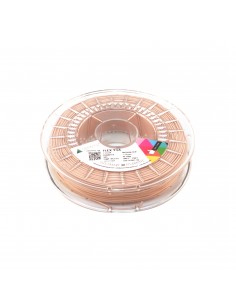- Filaments
- 1 likes
- 3041 views
- 0 comments
In the 3D printing sector, flexible materials have become a classic among the most commonly used printing options. Unlike most materials, flexibility as its main feature allows manufacturing models and objects that can be bent, stretched, or provide extra comfort in the cushioning of a handle, among many other examples.
Although it must be acknowledged that its beginnings in 3D printing were not easy, the advantage that it had over other materials also caused its main disadvantage: the difficulty in its use; because the first printing equipment was not optimized to push a flexible material, resulting in clamps, jams, and, in many cases, a bad experience. Although much of the responsibility for the proper functioning of flexible materials remains with the material, variables such as diameter stability, ovality, or the hardness of the material, defined by the Shore scale, make the difference between success and failure in a print, as well as obtaining only a good finish or an excellent finish.
In addition to the already traditional SMARTFIL® FLEX 93A, Smart Materials 3D has developed a new SMARTFIL® FLEX with a hardness of 98A on the Shore scale, a highly demanded alternative in the market. This new flexible material offers greater hardness and is especially indicated in the orthopedic and orthotic industry. It is used in protective devices that require a high impact resistance without deformations or breaks, as well as anti-vibration dampers. It also has good adhesion between layers and, despite being a flexible material, retains a good flexibility, which is typical of TPU's.
The SMARTFIL® FLEX 98A is slightly stiffer or harder than the standard flexible ones on the market framed in a shore range of 90A to 93A, this property from the point of view of the 3D printing process reduces the risk of deformation of the filament in the insertion system that leads the material to the print head, which allows a slightly faster printing compared to other elastomers, also retains the same properties of 93A such as high tear, tensile and wear resistance, as well as high abrasion resistance, toughness, chemical and thermal resistance. Another advantage of the SMARTFIL® FLEX 98 A, is that it expands the range of printers in which this filament can be used, in addition to being able to print on direct drive extrusion printers, it is also compatible with Bowden printers, since thanks to its rigidity the filament passes easily through the Bowden tube to reach the Hot-End, achieving faster print speed and generally more accurate prints. With all this, this new filament aims to respond to the industrial sector that seeks to make the most of the benefits of SPUs, increasing the possibilities of high-level applications and bringing innovations to the market with advanced technologies through these technical materials.





Comments (0)